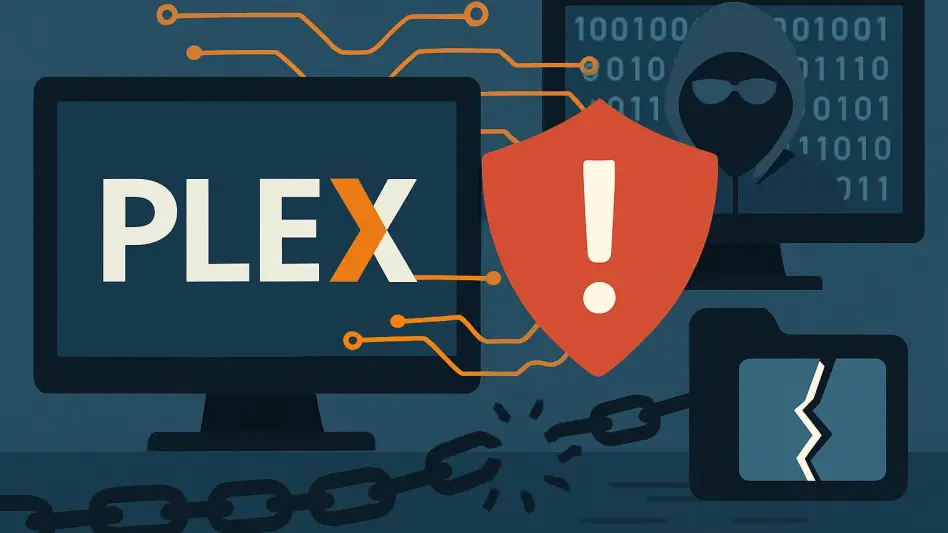In a digital era where personal media libraries are increasingly managed through streaming platforms, a recent security breach at Plex has sent shockwaves through the tech community, exposing sensitive user information and igniting urgent discussions about cybersecurity in the streaming sector. This incident, detected by Plex’s internal monitoring systems, revealed unauthorized access to a database holding critical data such as emails, usernames, and encrypted passwords. While financial details like credit card information appear to be unaffected, the breach has prompted Plex to issue an immediate call for users to reset their passwords to safeguard against potential misuse. The event underscores a growing vulnerability in platforms that blend centralized and decentralized systems, raising questions about how well user data is protected in an industry that thrives on accessibility and convenience. As cyber threats become more sophisticated, this breach serves as a stark reminder of the pressing need for robust security measures.
Immediate Impact on Users and Plex’s Response
User Data Exposure and Recommended Actions
The breach at Plex has left a wide range of users—from tech enthusiasts managing home servers to casual streamers accessing shared libraries—vulnerable to potential risks stemming from the exposure of emails, usernames, and encrypted passwords. This unauthorized access, though not involving financial data, could still enable malicious actors to attempt account takeovers or phishing attacks if passwords are not promptly updated. Plex has strongly advised all affected individuals to reset their credentials immediately and has emphasized the importance of adopting additional safeguards. Security experts echo this urgency, recommending the activation of two-factor authentication (2FA) to add an extra layer of protection. Furthermore, using unique, complex passwords generated by password managers and avoiding reuse across platforms is critical to minimizing risks. This incident highlights how even encrypted data, if mishandled, can become a gateway to broader security threats.
Plex’s Mitigation Efforts and System Review
In response to the breach, Plex acted swiftly by notifying users via email and initiating a thorough investigation to understand the scope and origin of the unauthorized access. The company has engaged third-party forensic experts to assist in this process, aiming to identify any lingering vulnerabilities within its infrastructure. Reports indicate that the breach was contained relatively quickly, preventing further data exposure, but the incident has nonetheless exposed potential weaknesses in the platform’s security protocols. Plex has also committed to a comprehensive review of its systems, focusing on strengthening defenses around both centralized databases and user-managed servers. This proactive stance, while commendable, raises questions about why such measures were not already in place, especially given the platform’s history of similar issues. The effectiveness of these efforts will likely shape user confidence in the coming months as Plex works to rebuild trust.
Broader Implications for the Streaming Industry
Systemic Vulnerabilities in Hybrid Models
The security breach at Plex shines a spotlight on the inherent challenges faced by platforms that operate a hybrid model, combining cloud-based services with self-hosted servers managed by users. This unique structure, while offering flexibility and control, creates amplified risks as self-hosted systems often remain exposed to the internet through open ports, serving as potential entry points for attackers. Centralized databases, meanwhile, become high-value targets due to the sheer volume of aggregated user data they hold, particularly for features like remote access. Industry analysts point out that this duality complicates security efforts, as protecting both environments requires distinct strategies. The recurring nature of such incidents at Plex suggests that without significant architectural changes or enhanced user education on securing home servers, these vulnerabilities may persist, posing ongoing threats to data privacy.
Industry-Wide Calls for Enhanced Security and Regulation
Beyond Plex, this breach has sparked a broader conversation about the state of cybersecurity across the streaming industry, especially at a time when data privacy is under intense scrutiny. Analysts warn that repeated incidents could erode trust in platforms handling personal media, such as family photos or private videos, driving users toward open-source alternatives with fewer centralized risks. There is also a growing push for stricter regulatory compliance under frameworks like GDPR or evolving U.S. data protection laws to enforce better safeguards. Industry insiders advocate for the adoption of advanced security practices, including zero-trust architectures, regular penetration testing, and AI-driven anomaly detection to preempt future breaches. This event serves as a catalyst for change, urging streaming services to prioritize robust defenses over mere convenience. As cyber threats evolve, the industry must adapt swiftly to protect user data and maintain confidence in an increasingly connected digital landscape.
Looking Ahead: Lessons Learned and Future Safeguards
Reflecting on the aftermath of this breach, it became evident that Plex took decisive steps to mitigate immediate risks by notifying users and engaging forensic experts to probe the incident’s root causes. The exposure of sensitive information, though contained, underscored a troubling pattern of security lapses tied to the platform’s hybrid model. Discussions within the industry revealed a consensus on the need for stronger protections and regulatory oversight to prevent similar occurrences. Moving forward, actionable measures emerged as a priority, with recommendations for users to bolster account security through 2FA and unique passwords. For Plex and its peers, investing in cutting-edge security technologies and fostering transparency became essential to rebuilding trust. This incident ultimately served as a critical lesson, prompting a reevaluation of how streaming platforms balance innovation with the imperative to safeguard user data against ever-growing cyber risks.








